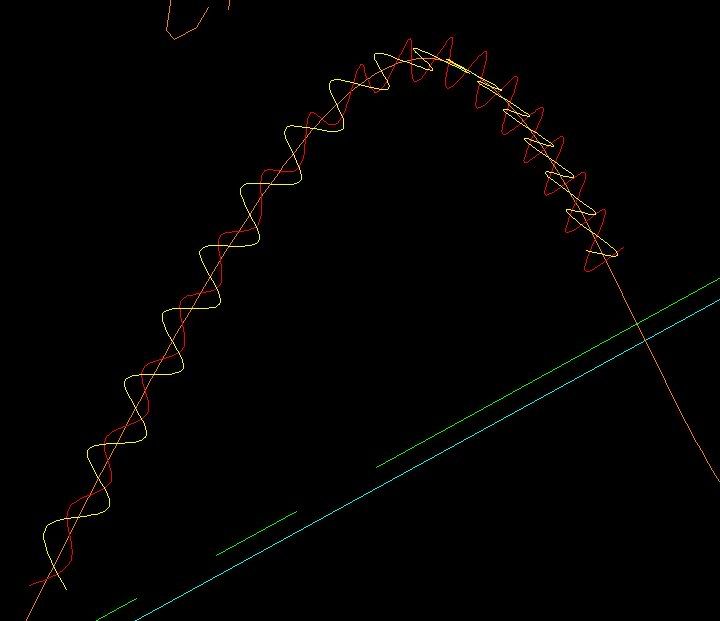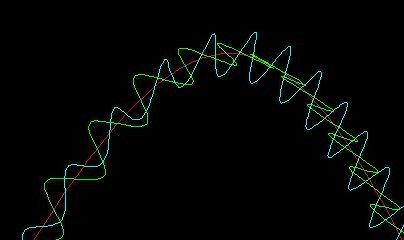


for what little it is worth :)
All modern field theories involve more than the regular 3+1 (x,y,z and time) dimensions - string theory, M-theory, and so on. Heim theories (there is a class of them) have between 6 and 12 dimensions. For example, original Heim theory has 6 dimensions, sufficient for deriving the masses of elementary particles. To generate the quantum electrodynamical and QCD structures of the standard model, 8 total dimensions are needed. The 12 dimensional model has something to do with additional gravitational forces required to explain a form of dark energy possibly responsible for observations of an accelerating universe. In each case, the dimensions can be added in brute force by hand and they see what comes out (it is done in general enough a way to be meaningful upon a sort of "parameter fit", like Klein theory) OR, as in string theory, arise naturally from imposing Lorentz invariance. String theories now have as many as 26 dimensions.
Now, what are these dimensions? They are still space-time dimensions (from the math at least). But we don't see them. This is unacceptable - we would like all facets of our models to be examinable. But, at the same time, the formalism works so well. Rather than discard it, it is hypothesized that the extra dimensions CAN be detected, but it is really really hard (and bounds are given for which these theories can be falsified via consistency checks).
One way is to say that the extra dimensions are "compactified", generally by causing them to loop back upon themselves.
The analogy presented to me for this is the multidimensional garden hose. If the hose is viewed from far away, it appears to have only one dimension, say length. If, however, you go closer to the hose, you see that it contains a second dimension, circumference. The "extra dimension" is only visible within a relatively close range to the hose, just as the extra dimensions in the string/etc theories are visible at extremely small distances, and thus are not easily detected.
(A point of clarification - garden hoses exist in three spatial dimensions, but for the purposes of this analogy, we neglect the thickness and consider only motion on the hose surface. A point on this surface can be specified by two numbers, a distance along the hose from one end of the hose, and a distance along the circumference (from say the top) - same idea as using latitude and longitude for earth. Like for earth, the object has two spatial dimensions. Unlike the Earth, the space we are trying to make an analogy for has no interior.)
Another possibility is that the visible universe is a large "D-brane" extending over the three usual spatial dimensions. All objects (the components of pens, cats, Tom Cruise, etc) are made of open strings which are bound to the D-brane, and cannot move "at right angles to reality" to explore the universe outside the brane. This is called "brane cosmology". Gravitons, which carry gravitational forces, are vibrational states of closed strings - in other words, gravity is not due to open strings. Because closed strings do not have to be attached to D-branes, gravitational effects could depend upon the extra dimensions at right angles to the brane. Again, this scenario is testable (falsifiable).
So these extra dimensions are like the three spatial dimensions that we know, in that they're all orthogonal to each other? If that's the case, then what's the advantage, for the purposes of this project, of traveling along one of these dimensions?
To simplify things down by eliminating a dimension, let's picture a table top as representing the universe, and I want to go from one point on top of the table to another. Moving in normal space, that is, moving along the surface of the table, I'm limited by the speed of light. But if I use this magnetic gizmo that they're devising which enables me to punch through to an orthogonal dimension and go "up", I'm not changing my position over the table, so that doesn't really help me much.
Now are they saying that by using this device, I don't limit myself to the up/down dimension, but can go anywhere at all above the surface of the table? Or would I have to go up some distance, and then activate the thing again in order to bang left, and then do it again to go down?
Or do I have the totally wrong conception of what these extra dimensions are like?



for what little it is worth :)